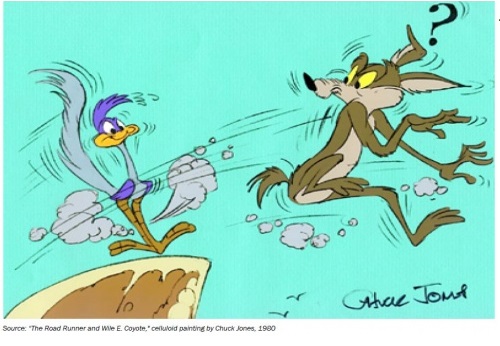 When the wreck is recovered, witnesses will wonder why they took such heedless, foolish risks.You’re in the back seat wedged between tipsy revelers, the driver is drunk and heading into Deadman’s Curve at 90 miles per hour. Nobody’s worried because the driver has never crashed. Before they slid into euphoric incoherence, the other passengers answered your doubts with statistics and pretty charts showing that the driver had never had an accident, so there was nothing to worry about.
When the wreck is recovered, witnesses will wonder why they took such heedless, foolish risks.You’re in the back seat wedged between tipsy revelers, the driver is drunk and heading into Deadman’s Curve at 90 miles per hour. Nobody’s worried because the driver has never crashed. Before they slid into euphoric incoherence, the other passengers answered your doubts with statistics and pretty charts showing that the driver had never had an accident, so there was nothing to worry about.
They also said that the driver’s Uncle Fed had rigged the vehicle with an anti-accident device, so a crash was impossible. One passenger blurted out that a fellow named Goldy Sacks said the driver could easily “melt up” and take Deadman’s Curve at 120 miles per hour without any trouble.
You see the problem here: the risk of crashing and expiring is soaring but the giddy occupants are completely confident there’s no risk, and this confidence is the source of the danger. If you’re sure Uncle Fed’s device can protect the vehicle from any crash, then why not take Deadman’s Curve at 90 miles per hour?
And if Goldy Sacks says you could actually take it at 120 miles per hour, then taking it at 90 MPH is actually quite prudent and cautious.
This confidence inspires tremendous risk-taking that eventually ends very badly for all the revelers. The irony is rich: the greater the confidence, the greater the risk, the greater the risk, the greater the odds of a crash. The greater the risks being taken, the greater the odds that the crash will be fatal to all occupants.
The confidence in Uncle Fed’s safety device is delusional because it’s never been tested. The fact that the driver hasn’t crashed doesn’t mean the risk is low or Uncle Fed’s device works perfectly, it simply means luck has been on the driver’s side.
It also doesn’t mean the driver can take Deadman’s Curve at 90 MPH without any risk. It simply means the driver hasn’t taken on more risk than he can handle until now.
When the wreck is recovered, witnesses will wonder why they took such heedless, foolish risks. What they couldn’t know is the occupants were all giddily confident that a crash was impossible no matter how great the risks. So why not take more risk?
Indeed. This makes perfect sense: if a crash is impossible, then by all means take Deadman’s Curve at 120 MPH.
Tags: Featured,newsletter






























